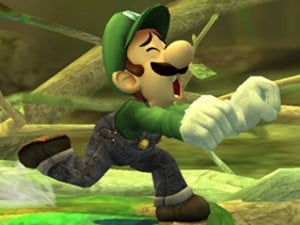
The Nintendo Entertainment System was a system that stimulated the imaginations of designers and gamers alike. Whether it was the smiling, dream-like wonderland of the Mushroom Kingdom, the sprawling fantasy world of Hyrule or the atmospheric depths of planet Zebes, the NES gave birth to some of the most brilliant and creative worlds in the history of gaming. But these worlds – and arguably the gameplay within – would be hardly as memorable without the incredible characters that inhabited them. These are some of gaming's most cherished heroes, who we still know and love today. Join us as we take a look back at a few key characters that Nintendo's little gray box gave us — and how drastically they've changed over the years.
Luigi
The NES launched with what many still consider the greatest game of all time: Super Mario Bros. But even with “Bros.” slapped on the end, Luigi seemed like little more than an afterthought. He was only available in two-player mode, and he didn't exactly have the most memorable character design – which is to say, he was a simple palette swap, and with a Fire Flower he and Mario were indistinguishable. But, little by little, Luigi began to differentiate himself. In the Japanese version of Super Mario Bros. 2 (known as The Lost Levels to Westerners), Luigi had distinctly different physics than Mario — his jump was higher and more unwieldy, and he had significantly less traction while running. These little details would eventually find their way into the U.S. version of Super Mario Bros. 2, a Mario-centric reworking of the Japanese title Yume Koujou Doki Doki Panic; the “Mama” character in the original was replaced with Luigi (after all, they don't call him Mama Luigi for nothin'!). This is also the first game that gave Luigi a unique character design. It's not much, but the fact that his slightly-elongated head didn't shrink with the rest of his body when he lost his power-up is still pretty hilarious.

And hilarious just might be the perfect word to describe the Luigi we all know and love today. After Super Mario Bros. 2, Luigi had a fairly quiet stretch — his presence in Super Mario World was inconsequential, and if you leave out all the sports and party games he appeared in, you're left with a starring role in Mario is Missing — and the less said about that one, the better.
It really wasn't until 2001, with the launch of the GameCube, that Luigi broke out of his sidekick-shell. And what a glorious coming-out party it was. Not only did Luigi's Mansion establish his cartoonish and comically cowardly personality, but it was also a heck of a game, too. It may not have received the outlandish amount of critical acclaim that Mario's adventures had, but its depiction of the Italian plumber was a brilliant move that would set the tone all of his subsequent adventures. Whether it's flailing his arms like a sissy in Super Smash Bros. or running away at the slightest sense of danger in Mario & Luigi, the little green guy knows how to make us laugh. And to think he used to be a just simple palette swap.
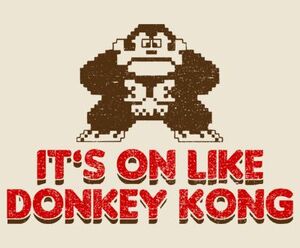
Donkey Kong
It's been approximately 25 years since Donkey Kong became a household name, yet if we were to ask “What exactly is a Donkey Kong game?” chances are we'd have some trouble getting a straight answer. While the Zelda, Metroid and Mario franchises have established a pretty consistent formula over the years, Donkey Kong has been through more changes and makeovers than one of the Real Housewives of Orange County. (See? We're hip and relevant.)
Like many of Nintendo's greatest creations, Donkey Kong was born out of limitations and improvisation. After failing to acquire the Popeye license (which they later would, creating a different game with it), Nintendo took one of their would-be game concepts for the sailor and used the opportunity to create new characters. Popeye became Jumpman, Olive Oyl became Pauline, and Bluto became a big hairy ape. How the name Donkey Kong came about has become something of a mystery. Some claim it was a mistranslation of “Monkey Kong,” while some say Miyamoto thought that “donkey” meant “stubborn” in English.
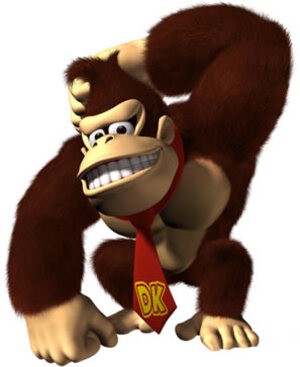
Released as an arcade game in 1981, then ported to the Colecovision – as detailed in our feature – and later to the NES in '83, the game was an enormous hit. It was so good, in fact, that it managed to launch the career of the game's non-playable antagonist (and we think that Jumpman guy turned out okay, too). And what a thoroughly weird career it would be.
Soon thereafter, a sequel was released: Donkey Kong Junior. Between this, it's prequel, and its sequel, Donkey Kong 3 (which gives the player the unique opportunity to spray large puffs of air upside Donkey Kong's rump), it would be a whopping 13 years after the character's debut before DK would actually become a playable character in his own game.
Thankfully, that game would be Donkey Kong Country. It was the first DK game not developed by Shigeru Miyamoto as well as the best-selling (non-bundled) SNES game of all time, and it ushered in a whole new era for the big brown ape. The Rare era.
What Rare did with the Donkey Kong license was nothing short of monumental for the series. It firmly established the modern character design (which was first toyed with in the 1994 Game Boy version of the original Donkey Kong), with his swirly hair and red DK tie. It also was the first game to break Donkey Kong out of his antagonistic shell. It presented him as a platforming hero, and introduced a number of now-classic characters such as Diddy Kong and Rambi the Rhino. Not only that, but its Silicon Graphics were jaw-dropping at the time.
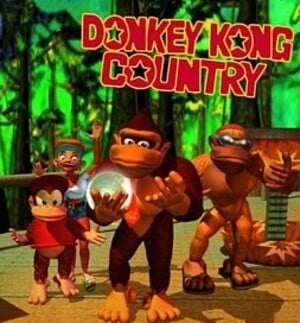
Donkey Kong Country would spawn two sequels on the SNES, and the Donkey Kong Land spinoff series on Game Boy, not to mention a fully 3D platformer on the N64.
This, however, would be Rare's last Donkey Kong title. A few years later, a contract with Microsoft ensured XBox console exclusivity — and with Donkey Kong's primary caregivers off with another company, the series would spin into confusion until... err, next month.
The GameCube era sent DK into some of his most bizarre starring roles — but of course, plastic bongo peripherals will do that to a franchise. Some of these bongo-enhanced adventures were actually the good kind of bizarre; in fact, Donkey Kong: Jungle Beat is considered by many to be the best game in the franchise. Some of them, however, were far from that. The Donkey Konga series of bongo-based rhythm games, although certainly not terrible, was just not the sort of thing that genuinely appealed to most people. All of DK's bongo-based games sold poorly, regardless of their quality, leaving hundreds of lonely, plastic bongos to be forever banished to the $2 bargain bin at your local specialty shop.
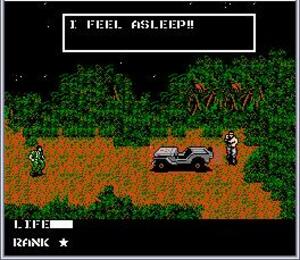
Thankfully, despite a shaky run last generation, the beloved ape seems to be in the right hands. Retro Studios recently released the newest instalment in the Donkey Kong Country series, Donkey Kong Country Returns — and as we state in our review, they've gotten it absolutely right.
Solid Snake
Solid Snake is gaming's premier badass. With his gruff voice, eye patch and explosive weaponry, he may come across as a painfully obvious action-star cliché. In a lot of ways, he still kind of is. But that's one of the reasons why we love him so much.
You see, back in the '80's, gaming didn't really have the bumper crop of bad-to-the-bone action stars that it does today. Its biggest hero at the time was Mario, an obese Italian plumber who ate mushrooms and kicked around what looked like turtles. So, while his character design at the time was little more than a rip-off of Michael Biehn from The Terminator, it's not hard to see why Snake made such a splash.

Well, it's not hard for us to see, anyway. Series creator, Hideo Kojima, has been openly hostile towards the NES version of Metal Gear – possibly because of his complete lack of involvement. Nevertheless, the NES edition was much more popular than that of the MSX2, and so a sequel was made. And another one. And another one...
Right from the get go, Solid Snake's adventure was different. It was one of the pioneers in stealth gaming, but it also placed a surprising amount of importance on storytelling.
And that's one thing that hasn't changed. The original Metal Gear's story may have been more memorable for its complete disregard for grammar than anything else (“The truck have started to move!”) but with Metal Gear Solid on the PlayStation, Solid Snake's espionage adventures took narrative, voice acting and cinematics to dizzying new heights (also dizzying: the weird, twitchy head-seizures all the characters suffered when they spoke). As a result, the game was immediately hailed as a classic – and even if you don't like heavy-handed storytelling and lengthy cutscenes, it's tough to dispute its influence on modern gaming. With each subsequent title in the series, Snake's outings have gotten increasingly long-winded, but the gameplay has also gotten increasingly deep and well-polished — peaking with the universally acclaimed Metal Gear Solid 4: Guns of the Patriots.
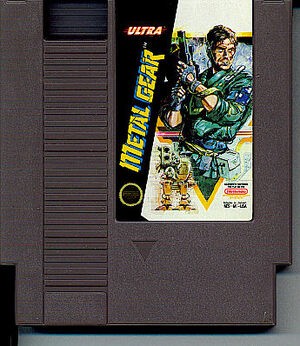
But the gameplay isn't the only thing that's gotten significantly deeper over the years. Snake has grown from a pastiche of popular action stars to a unique character with a surprising amount of depth and complexity. His gruff, lone-wolf-mercenary-who-doesn't-play-by-the rules personality is still an homage to... well, basically every action hero ever. It's the times when Snake isn't portrayed as a hero, perhaps even a war criminal, however, that we catch glimpses of a much more rich, interesting character.
He's not exactly Macbeth, but the fact that we could conceivably have a lengthy conversation about the nuances and details of a video game character is pretty astounding. The fact that we could about a guy who wears skin-tight leather, an eye patch and a bandana? Even more impressive.
Samus
If there's one thing the Metroid series has proven itself to be extremely good at, it's throwing a great curve ball. Now, obviously, it's mastered a great deal more than that, but when you've been consistently cranking out games since 1986, changing things up is pretty darn important.
And this knack for pulling the rug out from under players' feet was established in the series' very first game. That's right, at its now-famous ending, the bounty hunter's armour is removed to reveal... gasp! ...that's Samus is totally a chick!
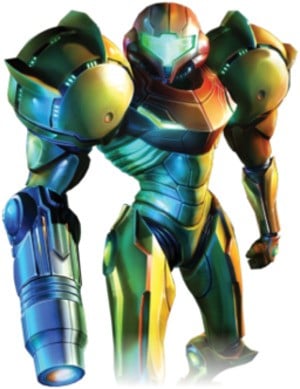
This was a big deal. Between Pauline and Princess Peach, women in video games were hardly presented with much strength or personality up to this point in gaming history. In comes Samus, with her arsenal of explosive weaponry and otherworldly power-ups; and while she may not have spoken, the incredibly dark and moody atmosphere the game exhibited helped give Samus a personality that was unlike any other character at the time.
Much like the spectacular games in which she's starred, Samus has continued to grow and evolve without losing sight of what made her so popular in the first place. Metroid II: The Return of Samus, aside from establishing the bounty hunter's barrel-shouldered character design, is perhaps most memorable for its emotional ending, which gave gamers a glimpse into a heroine who was potentially much deeper than the cold, heartless bounty hunter many made her out to be.
And that's continued to be one of the series' strongest suits: never going for the obvious. After an agonising gap after the colossally successful Super Metroid, the series went in a completely unexpected direction: a first person adventure developed by some Texans of whom no one had ever heard. Yet despite all the controversy, Retro's 2002 Metroid Prime was massive hit both commercially and critically.

While the Metroid franchise was innovating itself on consoles, Samus was busy developing as a character on handhelds. Her long-awaited return-to-form, Metroid Fusion, not only served up a much-needed dish of old-school Metroid goodness, but it went a long way towards establishing the heroine's melodramatic, introspective nature.
Metroid: Other M would elaborate on this more emotional side of Samus even further, and even though the game wasn't as critically exalted as the Prime games that preceded them, the gameplay was yet another fresh and original spin on what made the 2D titles so successful, and we applaud Nintendo yet again for being willing to take such bold risks with such a beloved franchise.
Link
Nearly every video game character who's been around for more than a decade has gone through some major re-design, and, more often than not, these changes kindle the flames of some pretty heated debates. Arguments about Sonic's mohawk, for example, or Mario's new-found slenderness, or Crash Bandicoot's increasingly threatening smile, just to name a few.
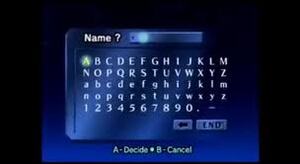
But few, if any, characters have undergone more cosmetic makeovers and design changes than Link. He's gone from brunette to blonde, adult to child, and, somewhat disturbingly, long nose to no nose at all (insert obvious plastic surgery joke here). The Zelda formula hasn't changed much over the years, but Link has made good and sure that he's got something to wear for every conceivable party.
The first major re-design came with A Link to the Past. After two games being portrayed as a young, brown-haired hero in a world of limited colour variety, Link's Super Nintendo outing sported a staggeringly broad palette — and, quite curiously, a pink-haired version of Link.
Even more importantly, however, this was the first game in the series to allow players to name their own hero — a tradition that continues to this very day. Sure, in past games you created a name for your profile, but A Link to the Past actually used this name to replace “Link” in the in-game dialogue. This said an awful lot about what the Zelda series was, and still is, all about: stimulating players' imaginations. Miyamoto didn't want to define Link as a character because he liked the idea of players having their own unique experience with the game, and allowing players to name the main character made the whole thing a lot more personal.
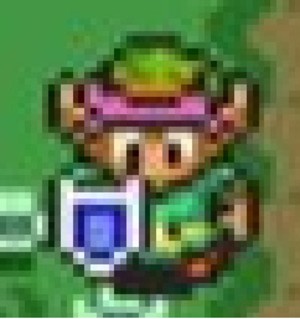
That's been one amazing thing about how Link has evolved as a character over the years: he's become increasingly expressive and emotive, yet he's still very much a tabula rasa on which players can project a little bit of themselves. Games like Ocarina of Time and The Wind Waker often gave players several different responses to questions posed by NPC's that would affect their reactions and sometimes even the courses of certain events.
Link hasn't gotten a whole lot deeper as a character over the years: he's still silent, undyingly courageous and valiant. But with his increasingly diverse range of emotions and overall expressiveness, he's become a much more engaging and, more importantly, more human vessel through with we're able to experience the incredible world of Hyrule.
Kirby
Kirby, the little pink bladder with legs we all know and love, might have actually been Kirby, the little white bladder with legs that we have mixed feelings about, had series creator Masahiro Sakurai not stepped in. Due to some confusion when localising Kirby's US debut (Sakurai imagined Kirby as white, Miyamoto imagined him as yellow, and Nintendo of America hadn't the slightest clue, given the Game Boy's colourless screen), the box art and television adverts for Kirby's Dream Land for the Game Boy depicted Kirby as an entirely white, almost ghastly character. Thankfully the Japanese box art got it right, and Kirby has been pink ever since.
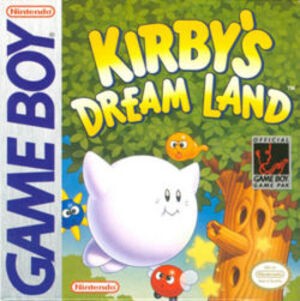
If cuteness was a crime, then Kirby would be eating his last meal right now. But then, even just the thought of Kirby in a little striped prison uniform munching on some food is sickeningly cute in and of itself.
You get it. Kirby's cute. Really cute. So cute, in fact, that he can make the sight of sucking in and swallowing fuzzy animals whole an adorable, huggable sight.
Cuteness, however, isn't the only constant in Kirby's diverse career. The little guy has sprinkled his likeness throughout a variety of genres over the years, but whether it's a standard platformer (a-la Kirby Super Star Ultra or Kirby 64: The Crystal Shards) or Kirby's Dream Course) (a-la the only 16-bit golf game Kirby was ever in), his games have always centred upon easy-to-play, instantly-accessible fun.
Now, not all of Kirby's transformations have been successful ones. Aside from huge amount of so-so puzzle games he's starred in over the years, there's Kirby Air Ride, which was a critical and commercial dud (although it has an admittedly loyal fan-base).

But when Kirby's risks pay off, they really pay off. Like packing eight games in one with Kirby Super Star, pioneering touch-screen controlled-gameplay with Kirby: Canvas Curse, or ditching his trademark moves and adding in one of the most creative visual styles ever to grace a video game with Kirby's Epic Yarn. He's taken many shapes and forms over the years (literally) but he's never lost focus on what made him so successful in the first place: accessible, colourful and whimsical fun that only a video game could offer.
That's all for now for part one of our retrospective. Who are some of your favourite multifaceted, evolving 8-bit characters? Who would you like to see featured in part two? Let us know in the comments!





Comments 51
How about....Yoshi? Or.... Megaman? Or....Contra? Or.....The Belmonts? Or....Pit?
Part 2.
Lol, I remember the DKC cartoon, it was so weird, but I liked it.
THATS IMPOSSIBLE SNAKE ISNT NINTENDO HES CLEARLY SONY LIESSSS.
But seriously this was cool
I actually never really minded the cutscenes in Metal Gear Solid. They were perfectly lengthed for me.
Also, Samus. <3
Crash Bandicoot's increasingly threating smile? I always thought the first game's cover had the most threatening smile...
I enjoyed this. I hope there will be more.
That's Mama Luigi to you NL
Nice Feature
@#1: Yoshi's an SNES character
@11
Whateva!
Very cool list!
LOL, so true.
NES? Some started on the Arcade, MSX and Gameboy. But I guess they have all been on the NES at some point.
Sorry to double post but if you want to get technical DK was first playable on DK Junior since that DK grew up to be the current DK or the DKC DK.
Oooooooh! You used the image! I'm telling!
(Part 2... feature Punch-Out!)
By the way, that's NOT why they call him Mama Luigi. This is.
Luigi: "You look ridiculous!"
He's always been a favorite of mine. DK gets more awesome as time goes by.
in part 2 feature Star fox and funny luigi image
Looking at the "DK Botox years" picture... it looks like he's saying "It's a Jersey thing!"
@19: Star Fox was never on the NES
Zelda, Mega Man, Excitebike, Punch-Out!!
... There are too many NES games for me to comprehend right now.
Kirby Air Ride is such an AMAZING game. Perhaps not 10/10, but it's incredibly unique and infinitely replayable. It leaves a pretty odd first impression but once you get into it it's an amazing piece of software.
Perhaps slightly off-topic but it had to be said!
MAMA LUIGI!!!
"There's Kirby Air Ride, which was a critical and commercial dud (although it has an admittedly loyal fan-base)."
And I'm its leader.
@Kaiser DK Jr aint DK.
LOl'd so hard at Kirby
They said Donkey Kong Country was the first game where DK was playable. That DK WAS DK Jr! So going by this logic you could play as the younger version of this same DK on DK Junior.
I've always felt that Luigi's depiction as comedic and scared was kind of jarring. He used to go on adventures side-by-side with Mario, and they both seemed adventurous, brave, and ready to fight the odds. Then, Luigi's Mansion came out. It works, but it feels like there's some character development left unexplained. When did he go from the adventurous, fun-loving brother, to having to fight through fears? There was an official Super Mario Bros. manga that depicted Luigi a lot like how we know him today, but nothing ever came up in the games until 2001.
With his gruff voice, eye patch and explosive weaponry,
Snake doesn't have an eye patch besides in 4 where that's just an accessory to help him through the game. Big Boss is the one with the eye patch. Big difference.
It's the times when Snake isn't portrayed as a hero, perhaps even a war criminal,
Snakes always a hero. He has always been he's just the one to always deny it because he feels like he doesn't deserve it. Colonel, Naomi, Otacon, Raiden, Gray Fox, even Big Boss himself are all impressed, and in simple awe by Snake's performance and mentality.
He's not exactly Macbeth
He'd kill Macbeth.
@post #1
A. Check the title. It's part 1.
B. Contra is a game. The main character is Bill and he has never had any personality or development anyway.
C. People from the Belmont family have starred in very few Castlevania games overall. And they're not a single character.
D. Pit has been in a grand total of 2 games so far. How would you do a full post on him?
@bruinj: Simple: cover each game in detail from Kid Icarus to Brawl
@31
Actually Pit has been in 3 games soon to be 4.
YYYYYYYYYYYoooooooooooosssssssssssssssssshhhhhhhhhhhhhhhhhhhiiiiiiiiiiiiiiiiiiiiii
@26.Aviator: Yes he is. Ask Rare.
Hey Kaiser, I used 2 think that at first too until I came across some article that talked about the inconsistency of DK and how the DK with the tie is DK the 3rd. Even more interesting is the box art for The New Donkey Kong... who's that he's got in his arm? Should be his own dad since Cranky is the original DK, but that's impossible... unless we go by Super Mario Kart where DK Jr. is fully grown, but then, how did DK Jr. revert back to a kid in TNDK? Questions, questions. You might be on to something, but the only way the DK with the tie could be DK Jr. grown up is if the DK Jr. in TNDK is HIS son. In conclusion, it must be:
Cranky - original DK
DK Jr. - Who grew up a little by the time SMK released, then grew up some more and eventually traded in his "Jr." outfit for a tie
2nd DK Jr. - the new DK Jr. appearing only in TNDK and I believe other short cameos.
Sound like an article we need, NL, STAT!
Nice article. Luigi may be a sissy, but he's the underdog, which is why I root for him.
I would like to learn about Wario. He had many detailed transformations for a gameboy screen, and for the fact that he is always greedy for treasure and coins,
He appeared in the last NES game called Wario's Woods
Ok correct me if I am wrong here but isnt the Donkey in the Arcade game a different Donkey Kong from the one in DKC?
yoshi is a nes character theres even games for him on the virtual console.
@Meloman I wish I could help but I don't know what TNDK are you talking about the current DK or a specific game? I think some games messed it up by saying Cranky is DK's grandfather. On some games (a lot) he Cranky keeps calling DK his "good for nothing son". The fact is, Cranky is the Original DK and DKC DK is not the arcade DK. But... the specifics are up in the air. A also don't agree about Diddy being the son since he is a chimp and not a gorilla.
Let's see Marth and his no-pantsness
Let's see Pikachu in Part 2, if for no other reason than to have an excuse to talk about "Hey You, Pikachu" for the N64. No, he was never on the NES, but he did originate on the 8-bit GameBoy just like Kirby.
I thought that Cranky Kong was supposed to be the original DK in DKC, and the DK character you play in the game was his grandson or something. I think that was how it was explained in the original SNES instruction manual, unless my minds playing tricks on me again.
waffles hehehe!!!
Nice article. You should definitely put Mega Man in part 2.
@AllTheDonkeyKongDiscussion:
That evolution it´s also apply to the other characters in those games. But, if you are speaking about playable characters, i think you have to include Princess Peach, Megaman, Fox Mccloud, Captain Falcon, Picachu and even Princess Zelda (Sheik)
@saqbalam Fox, Pikachu and Captain Falcon were never on the nes.
I think it's pretty damn obvious who my favorite is, haha.
It was a sad day when Nintendo decided not to have Luigi as a constantly accessible character. At least they're adding him in some Awesome Games Like Super Mario Galaxy 1 and 2. He's currently number 2 on my list of the best Nintendo characters.
1. Link
2. Luigi
3. Mario
4. Yoshi
5. Kirby
You've got to mention Peach's hair in the next article. She has re-dyed it so many times it isn't funny.
DIC Cartoons (Super Mario Brothers Super Show) and early official Nintendo comics - Redhead
NES Super Mario Brothers - Redhead
NES Super Mario Brothers 2 and 3 - Brunnette
SNES Super Mario World, Mario Kart, Mario RPG - Blonde
N64 Mario 64 - Blonde
N64 Paper Mario - Orange/red hair [wtf???]
I believe that Paper Mario (N64) was her last official appearance as a non-Blonde.
Does Poke'Mon in general count?
Tap here to load 51 comments
Leave A Comment
Hold on there, you need to login to post a comment...